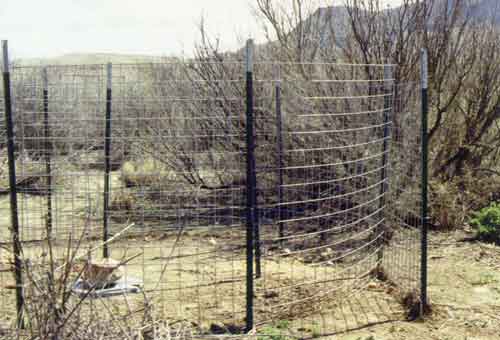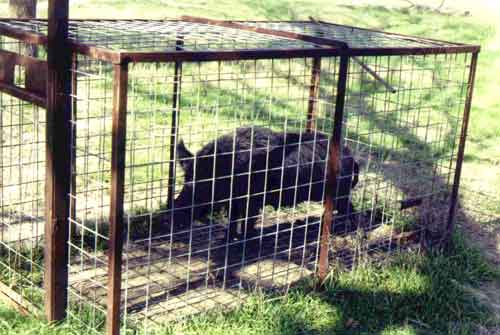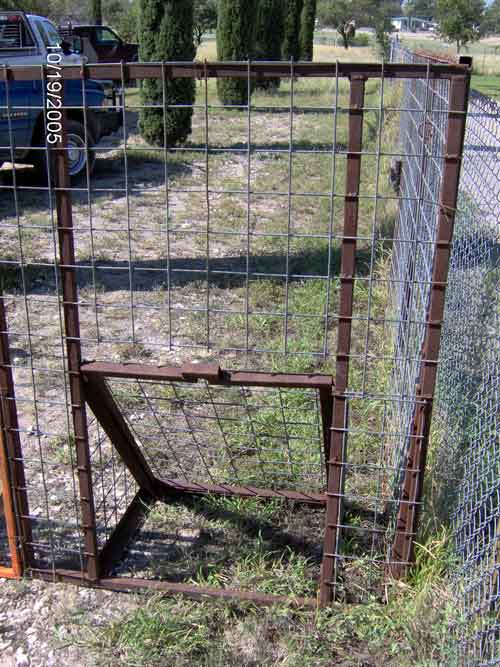Integrated Pest Management
In order for farmers to effectively wage war on insect threats the concept of Integrated Pest Management (IPM) has been employed for many years. It utilizes five basic components which provide for a systematic approach to the formulation of strategies for addressing pest concerns of various kinds, including the predators confronted by meat goat producers. These components are:
- Identifying pests versus beneficial organisms
- Active scouting – knowing what is going on
- Determining economic thresholds
- Considering management alternatives
- Weighing environmental concerns
Pests versus Beneficials
Being able to recognize when a predator is detrimental (a Pest) or beneficial in a particular situation is an important skill for predator managers to possess. Obviously, when a predator is killing goats it has earned the name Pest. Other animals which may serve as prey for predators can perform a valuable service as they provide a buffer for the effect on livestock that would be realized in their absence. Predators are generally opportunistic in their feeding habits. A density of rabbits and/or rodents providing a ready food source for predators which would otherwise be preying on goats is a beneficial situation, lessening to some degree the amount of predation that might take place if rabbit numbers were low.
Likewise, situations can exist in which one potentially threatening predator population in effect can control or limit the population density of another. If raccoons are the predator of concern, killing or maiming young kid goats for example, coyotes can actually be beneficial to a degree because they are considered by many to limit raccoon numbers since they are a food source for coyotes. Far-fetched, certainly, since coyotes themselves are usually a threat to goat production. The point is, by lowering one population you may inadvertently enhance another which might also be damaging to your operation. The interrelationships of predators and their prey is a fascinating subject. An understanding of them is crucial to the realization of the desired results from your predator management efforts. An awareness of the complexities of these relationships should temper, to some degree, any tendency to oversimplify by carrying out a vendetta on all predators.
Scouting
First, the presence or absence of predators which might prey on goats must be ascertained. Roads and sandy draws can be monitored for droppings (scats) and tracks. Look for scrapes where animals mark their territory. Net-wire fences provide the opportunity to check for hair left behind as animals cross over or under. Digs or slides under fences can be indicative of the passage of predators. Scent stations (Figure 1) made by clearing all of the vegetation off a portion of ground about 1 yard in diameter along a roadside, with some sort of track bearing surface like flour or slacked lime generously dusted over it and an attractant like bobcat urine (available from trapping suppliers) placed on a cotton swab in the center, can provide a means of discovering which predators are present in an area. Monitor the stations daily for at least three consecutive nights and record the number of scent station nights on which the tracks of each species of interest appear.

Figure 1. Scent stations should be placed along roads for monitoring convenience and because predators frequent them.
Next, the population trend of potential predators is important. If population density information is gathered the same way every season or year-using the same roads, the same methods, objectively gathered-it will be useful for planning your predator management strategy. By keeping track (no pun intended) of the information gathered-number of scats and/or sets of tracks on a given route which is monitored the same way every season or year, scent station nights in which various species occur, and accumulating the information over several years and across areas-you can begin to see what trend might be apparent in various predator populations and adjust your management accordingly.
Trouble spots might become evident as you monitor predator numbers. Whether by virtue of goat losses having occurred or the presence of an unusually high density of predators you may choose to initially aim your efforts in those areas. You may also delay placing animals in a problem pasture or ranch until after the threat is reduced or eliminated.
Economic Thresholds
Economic feasibility understandably drives much of what is done in agricultural operations, just as it does in other business ventures. With regard to predator management, feasibility can be determined by identifying the economic threshold involved, specifically that point at which the level of damage incurred is sufficient to justify the cost of the control practice. Before undertaking any predator management activities, many of which can be rather expensive, be sure that the end justifies the means. It makes no sense to expend thousands of dollars to reduce losses amounting to hundreds unless there are long-term goals that justify the action. At least attempt to utilize economically appropriate measures. Balance the “control” expense with the value of the loss. A relatively minor loss (monetarily) to predation will warrant a different response than a more extensive loss. Let the degree of loss dictate the response.
Management Alternatives
A key element of IPM is the development of an array of management alternatives-a toolbox, so to speak-from which to select the appropriate approach to a particular situation. Both non-lethal and lethal techniques are available. Non-lethal means might be considered first, then lethal ones if necessary.
Often a predation problem can be effectively thwarted by non-lethal measures such as:
- Shed kidding or year-round night penning.
- Guard animals such as donkeys (jennies, usually), llamas, or dogs.
- Fencing type and configuration can limit predation, or at least provide for more effective application of some types of lethal techniques such as snares which can be placed in digs under net-wire fences. Electrified offset (~8 inches) wires can be placed on fences at about 8 inches off the ground and again at about 30 inches to deter fence climbing by cats. Overhanging outward-leaning top portions of fences can also help. A buried lateral apron of net wire can deter digging under fences.
- Noise-making devices, especially around pens where animals are kept overnight can help ward off predators, though eventually the predators will likely grow accustomed to the sound and ignore it.
- Aversive taste conditioning of predators has met with only limited success so far, but remains a possibility in the future.
If non-lethal practices are not feasible or effective, lethal measures might then be necessary. The toolbox most commonly includes:
- Foothold or leghold traps- generally buried alongside travel-ways and baited with an attractant like a scat sprayed with predator urine (for coyotes), and/or a visual lure like an over-hanging feather or tuft of hair (for bobcats), or blind-set in known paths; can be fairly selective depending on placement, bait, and overall operator skill.
- Live traps or cage traps (Figures 2, 3, and 4)- fairly selective depending on size, bait, and trigger mechanism, but some predators like coyotes avoid them.

Figure 2. Feral hog trap made of stock panel showing simple one-way entrance.
Figure 3. Live trap for feral hogs, using drop-type gate.
Figure 4. Rooter-type gate for feral hog trap (on display without remainder of trap). - Snares (Figure 5)- suspended loops of cable with a one-way slide that tightens on the animal and restrains or kills it as it passes through; most often placed at a dig under a net-wire fence; selectivity depends on skillful placement in known passage-ways of offending animals and frequent monitoring.

Figure 5. Snare placed in a crawl under net-wire fence. - M-44s (sodium cyanide delivery devices), and Livestock Protection Collars (LPCs) (containing sodium monofluoroacetate- or Compound 1080)- available in some states; canine specific for M-44s and specific for individual offending animal for LPCs; strict compliance with governmental regulations regarding their use, and training and licensing is required for applicators. Contact your state wildlife officials and state agriculture officials for more information. For licensing in Texas contact the Texas Department of Agriculture.
- Aerial gunning- effective and selective; approval and/or permit(s) required. Check with your state wildlife officials for pertinent regulations and permits. For further assistance contact USDA/APHIS Wildlife Services office in your state.
- Calling- various manual or electronic audio devices which mimic the sound of a prey animal; used to lure predators within gunshot range.
Environmental Effects
An IPM approach always includes evaluation of potential environmental impacts. The manipulation of wildlife populations can involve numerous ramifications. Be aware of the effect that reducing the population density of one species may have on population levels of others. Lowering the numbers of coyotes for the sake of livestock protection, for example, may simultaneously enhance white-tailed deer survival and therefore their population density. Be prepared to harvest added numbers of deer if necessary in order to keep the population from exceeding the level which can be supported by the existing habitat without degradation. If M-44s or LPCs are used make sure that all label requirements are followed in order to protect persons using them, avoid exposure to non-target animals, and to safeguard against environmental contamination. When used properly these tools are safe and pose minimal threat to the environment.
Next
Module Home
Certification Table of Contents
Browsing Table of Contents
